Agenda
Conference Schedule
Day 1 full schedule
April 18, 2022 @ -
Stereolithographic Additive Manufacturing and Functionally Geometric Modulations of Spatial Ceramic Patterns
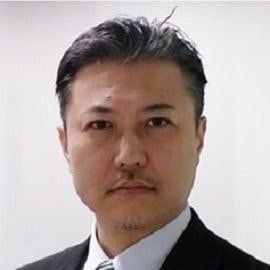
Soshu Kirihara
ProfessorOsaka University
Japan
ABSTRACT
In stereolithographic additive manufacturing (STL-AM), 2-D cross sections were created through photo polymerization by UV laser drawing on spread resin paste including nanoparticles, and 3-D models were sterically printed by layer lamination. The lithography system has been developed to obtain bulky ceramic components with functional geometries. An automatic collimeter was newly equipped with the laser scanner to adjust beam diameter. Fine or coarse beams could realize high resolution or wide area drawings, respectively. As the row material of the 3-D printing, nanometer sized metal and ceramic particles were dispersed into acrylic liquid resins at about 60 % in volume fraction. These materials were mixed and deformed to obtained thixotropic slurry. The resin paste was spread on a glass substrate at 50 μm in layer thickness by a mechanically moved knife edge. An ultraviolet laser beam of 355 nm in wavelength was adjusted at 50 μm in variable diameter and scanned on the spread resin surface. Irradiation power was changed automatically for enough solidification depth for layer bonding. The composite precursors including nanoparticles were dewaxed and sintered in the air atmosphere. In recent investigations, ultraviolet laser lithographic additive manufacturing (UVL-AM) was newly developed as a direct forming process of fine metal or ceramic components. As an additive manufacturing technique, 2-D cross sections were created through dewaxing and sintering by UV laser drawing, and 3-D components were sterically printed by layer laminations with interlayer joining. Though the computer aided smart manufacturing, design and evaluation (Smart MADE), practical materials components were fabricated to modulate energy and material transfers in potential fields between human societies and natural environments as active contributions to Sustainable Development to Goals (SDGs).
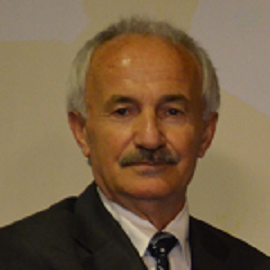
Osman Adiguzel
ProfessorFirat University
Turkey
ABSTRACT
A series of alloy system exhibit a peculiar property called shape memory effect. These alloys are called shape memory alloys; this effect is initiated by cooling and stressing treatments, and performed on heating and cooling processes following the previous treatments, in bulk level, and this behavior is called thermoelasticity. Every step is a result of crystallographic transformations in the material, in crystallographic level. Two successive thermal and stress induced martensitic transformations govern this phenomenon in crystallographic basis. These transformations are also governed by lattice twinning and detwinning reactions.
This property is characterized by the recovery of two certain shapes of material at different temperatures. These alloys possess two unique abilities: the capacity to recover large strains and to generate internal forces during their activation.
Thermal induced martensitic transformation is first order lattice-distorting phase transformation and occurs along with lattice twinning in the material on cooling from high temperatures, and ordered parent phase structures turn into the twinned martensitic structures. The twinned structures turn into detwinned martensite structures by means of stress induced transformation by stressing the material in the low temperature martensitic condition. Thermal induced transformation occurs as martensite variants with cooperative movements of atoms by means of lattice invariant shear in two opposite directions, <110 > -type directions on the {110} - type planes of austenite matrix which is basal plane of martensite.
These alloys exhibit another property called superelasticity (SE), which is performed in only mechanical manner by stressing material in parent phase region just over austenite finish temperature, and recover the original shape on releasing the stress in superelastic manner. Superelasticity is performed in non-linear way; stressing and releasing paths are different in the stress-strain diagram, and hysteresis loop refers to energy dissipation.
Deformation at different temperatures in intermediate region between Martensite start and Austenite finish temperatures exhibits different behavior beyond shape memory effect and superelasticity, and the materials partially recover original shape.
Copper based alloys exhibit this property in metastable β-phase region, which has bcc-based structures at high temperature parent phase field. Lattice invariant shear and twinning is not uniform in these alloys, and gives rise to the formation of unusual layered structures, like 3R, 9R or 18R depending on the stacking sequences on the close-packed planes of the ordered lattice. The unit cell and periodicity is completed through 18 layers in direction z, in case of 18R martensite, and unit cells are not periodic in short range in direction z.
In the present contribution, x-ray diffraction and transmission electron microscopy (TEM) and differential scanning calorimetry (DSC) studies were carried out on two copper based CuZnAl and CuAlMn alloys. X-ray diffractograms taken in a long time interval show that locations and intensities of diffraction peaks change with the aging time at room temperature. In particular, some of the successive peak pairs providing a special relation between Miller indices come close each other. This result refers to the rearrangement of atoms in diffusive manner.
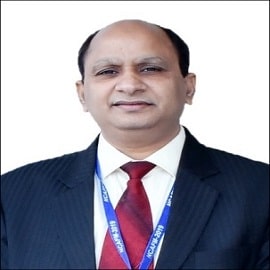
Dr. Tokeer Ahmad
ProfessorJamia Millia Islamia
India
ABSTRACT
Nanomaterials are among the most challenging areas of current scientific and technological research because of the variety of interesting changes in their properties at nano-dimension. Functional nanomaterials find the possibility for their applications in water splitting processes for hydrogen generation as a renewable source of green energy. Fe3O4 nanocubes were prepared in one pot process for the electrochemical water splitting and supercapacitor applications. Magnetic measurements indicate that the as-synthesized Fe3O4 nanocubes are ferromagnetic at room temperature. The synthesized nanocubes have high specific surface area of 268 m2 g-1, which affects the electro-catalytic activity of the electrode materials. The electro-catalytic performances of the IONPs for the HER and supercapacitors were investigated in alkaline medium at room temperature. Similarly, ultrafine RuO2 nanoparticles have been prepared through a wet chemical method. The catalytic activity of ultrafine RuO2 was examined against the Horseradish peroxidase enzyme (HRP) and applied as sensor for the detection of H2O2 in the solution. Besides that, the stimulating bifunctional electro-catalytic performance of RuO2 nanoparticles was studied under different atmospheric conditions. The studies of Yttrium Ferrite nanoparticles by citrate precursor route reveal the formation of monophasic orthorhombic YFeO3 nanoparticles with fairly uniform distribution of nearly spherical particles, high specific surface area of ~338 m2/g and visible band gap of 2.5 eV. Dye sensitized solar cell of YFeO3 nanoparticles was constructed in combination with TiO2 powder to determine the photo-conversion efficiency, current density and open circuit voltage. Photocatalytic generation of hydrogen by using YFeO3 nanoparticles has also been studied under the visible light irradiations which showed a significant H2 evolution reaction rate up to 131.6 µmol h-1g-1. Delafossite CuCrO2 nanoparticles were found to have 2-4 times higher specific surface area than reported nanoparticles and showed remarkable enhancement in catalytic degradation of methylene blue in aqueous media under the sunlight irradiation. The chemistry of some oxide based multiferroics of general structure AMO3 (A= Y, Gd & Bi and M = Fe, Mn & Cr) nanoparticles will also be discussed.

Vijayaraghavan R
ProfessorSchool of Advanced Sciences
India
ABSTRACT
Oxides based antimicrobials are getting prominent as these offer many possibilities to tune their
anti bacterial activity through chemical doping. Since these materials release Reactive Oxygen Species ( RoS) in aqueous suspension both in presence and light of light due to defects , the activity can be enhanced through doping. We have been investigating ZnO and its antibacterial activity for sometime. Recently , we have manipulated its antibacterial activity through vacancy creation by appropriate dopants.
We have synthesized and characterized micron ZnO, N doped micron ZnO, nano ZnO and Na & La doped ZnO for the chemical manipulation. Oxygen vacancies have been confirmed by XPS. RoS [ OH. H2O2 O2-] has been estimated by PL, UV-visible spectroscopy and chemical titration and correlated to the activity.
Results confirm that vacancies enhance RoS and bacteriocidal efficacy and it is maximum in Na doped ZnO having highest vacancies releasing highest amount of RoS.

Vijayaraghavan R
ProfessorSchool of Advanced Sciences
India
ABSTRACT
Oxides based antimicrobials are getting prominent as these offer many possibilities to tune their
anti bacterial activity through chemical doping. Since these materials release Reactive Oxygen Species ( RoS) in aqueous suspension both in presence and light of light due to defects , the activity can be enhanced through doping. We have been investigating ZnO and its antibacterial activity for sometime. Recently , we have manipulated its antibacterial activity through vacancy creation by appropriate dopants.
We have synthesized and characterized micron ZnO, N doped micron ZnO, nano ZnO and Na & La doped ZnO for the chemical manipulation. Oxygen vacancies have been confirmed by XPS. RoS [ OH. H2O2 O2-] has been estimated by PL, UV-visible spectroscopy and chemical titration and correlated to the activity.
Results confirm that vacancies enhance RoS and bacteriocidal efficacy and it is maximum in Na doped ZnO having highest vacancies releasing highest amount of RoS.

Tajudeen Ayodele Adebileje
StudentTehran University of Medical Sciences
Iran
ABSTRACT
We tested an interface-moving boundary model for fluids to estimate the asymmetric diffusion of water, formic acid solution (FAS), and synthesized magnetic iron oxide micro-nanorods (MIOs) in FAS through the computation of timedependent bending within a capillary tube. The interface model was obtained at the detector region of the capillary electrophoresis (CE) device by subjecting a fluid-filled capillary tube to constant pressure flow (104 pa) with another fluid. The boundary interface with a minimum, maximum, and inflection point was characterized by regularization of a continuous polynomial function using a least-square regression method. We used the factorial design of an experiment to design and analyze the effects of concentration of formic acid (CCHOOH) and volume fraction of MIOs (VFMIOS) in confined fluid samples on obtained values of diffusion coefficient (DiffC) for water (0.77*10-10 to 26.20*10-10 m2 /s), FAS (2.64*10-10 to 63.44*10-10 m2 /s), and MIOs in FAS (0.06*10-10 to 2.39*10-10 m2 /s). The difference in values of DiffC as a function of sample constituents during the transpose of the interface model of fluids was noted to be attributed to the local environment and density of the liquid within the interfaces.
ZnFe2O4/CdS/ZSM-5 zeolite nanocomposite: Synthesis & its application for the sonocatalytic degradation of toxic organic pollutants

Pourya Zarshenas
studentShahid Beheshti University
Iran
ABSTRACT
In the present research, the ZnFe2O4/CdS/ZSM-5 zeolite as a newly magnetically separable nanocomposite was successfully synthesized by the ultrasonic-assisted solvothermal method. FESEM, EDAX, FTIR, XRD and VSM were applied to fully characterize the as-synthesized nanocomposite. Then, the sonocatalytic performance of ZnFe2O4/CdS/ZSM-5 zeolite was investigated on the organic dyes degradation, namely methylene blue (MB), rhodamine B (RhB) and methyl orange (MO) from aqueous solutions for the first time. Multiple analytical factors such as irradiation time, initial dye concentration, process type, catalyst dosage, H2O2 concentration, and organic dye type have been fully evaluated to gain the maximum sonocatalytic efficiency. Based on the obtained outcomes, the ZnFe2O4/CdS/ZSM-5 zeolite sonocatalyst was incredibly able to completely degrade the organic dyes via using the ultrasonic and H2O2 agents. The .OH radicals were distinguished as the main reactive species on the sonodegradation process of dyes under US irradiation, as well. Additionally, the reusability of the ZnFe2O4/CdS/ZSM-5 zeolite sonocatalyst was investigated, which affirmed that it can be reused up to five runs with almost trivial loss of catalytic activity. In conclusion, the sonocatalytic degradation of organic dyes by the ZnFe2O4/CdS/ZSM-5 zeolite sonocatalyst in the presence of US/H2O2 system displays a great potential to study further highly removal of organic pollutants from effluent.
Magnetic properties of Ashkin Teller model ferromagnetic thin films with spin 1/2: Monte Carlo treatment

A. Benmansour
TechnicianUniversity of Tlemcen
Algeria
ABSTRACT
The magnetic properties of an Ashkin Teller spin 1/2 thin-film magnetic system are studied as part of the Monte Carlo simulation method, based on the Metropolis algorithm, in a simple cubic lattice. The effect of the four-component exchange interaction  is studied. Moreover, the phase diagram exhibits a ratio of the special surface coupling at which all the films have a unique critical temperature for an arbitrary thickness. Then, the system presents a second-order phase transition.
is studied. Moreover, the phase diagram exhibits a ratio of the special surface coupling at which all the films have a unique critical temperature for an arbitrary thickness. Then, the system presents a second-order phase transition.
Transition metal oxide nanoparticles: adsorption/desorption of bio/chemical molecules for myriad of applications

Edward Lai
ProfessorCarleton University
Canada
ABSTRACT
Transition metal oxide nanoparticles (TMONPs) have unique electrochemical properties, including superior charge carrier mobility. 1 They can serve as efficient catalysts in oxidation reactions for the industrial synthesis of chemical intermediates.2 Reduced TiO2 and ZnO nanoparticles in solution can transfer both electrons and protons to organic free radicals; 3 they can also increase the ageing of insulation liquids and dielectric paper. 4 CeO2 nanoparticles possess promising anti-inflammatory, anti-oxidant and anti-fibrotic properties for medical treatments.5 In this presentation, I will give an account of our research work on the development of instrumental methods for studying the adsorption of bio/chemical molecules that come in contact with TMONPs. Desorption of these agents/contaminants from their surfaces can be attained using coordination chemistry, biochemical interaction, laser photothermal chemistry, aerosol nebulization, or electrospray assistance. A new design of evanescent laser-induced fluorescence detector will be described for assessing the decontamination of TMONP surfaces, so as to produce a clean nanomaterial that is often demanded by advanced industrial applications.
EVALUATION OF DISSIMILAR WELDED JOINTS OF HIGH STRENGTH LOW ALLOY STEEL AND 316 STAINLESS STEEL USING SMAW PROCESS FOR OFFSHORE APPLICATIONS
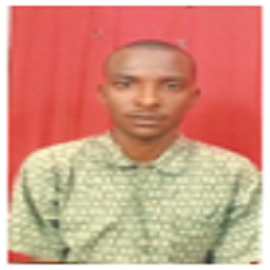
M.A.Hayatu
Examination officerJigawa State Polytechnic, Dutse
Nigeria
ABSTRACT
In thisresearchdifferentdissimilarweld joints of HSLA and 316 austenitic stainless steels were produced using 316L-16 and E7018 electrodes by SMAW process. Five (5) variations of welding currents (75A, 85A, 95A, 105A and 115A) were employed within the specified range of each electrode. Welding parameters such as heat inputs, welding speeds, weld sizes, arc voltages and time of welding were determined, computed, recorded and analysed .Weld joints made with 316L-16 and E7018 electrodes were designated as Sample ‘A’ and ‘B’ weldment respectively. The different specimens for each weldment were subjected to microstructural, mechanical and XRD analysis. Sample B weldments presented comparatively better mechanical properties compared to Sample A. Best mechanical properties of Sample B weldments were attained at higher welding inputs (105A, 30v, 3.32kJ/mm) while that of Sample A were achieved at lower welding inputs (85A, 25v,2.29kJ/mm).Specimen B4 offered overall best mechanical properties of all Sample B weldments while specimen A2 presented best mechanical of all Sample A weld joints. Weld metal microstructures indicated type A and AF solidification patterns of austenitic stainless steels. Grain boundary ferrite, grain growth and precipitates were observed at stainless steel HAZ.The microstructures and precipitates were related with mechanical properties.In conclusion, the mechanical and microstructural properties of specimen B4 and A2 meet requirement for engineering applications.
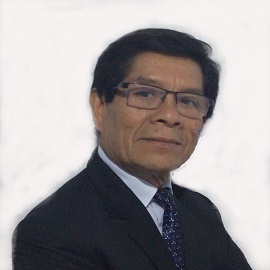
Pedro Angeles Chero
Chemical Engineernational university of Trujillo
Peru
ABSTRACT
The aggressive behavior of the corrosion in the industry of industrial processes that generates great economic losses in the whole world keeps alert the investigators who every day look for like new materials resistant to this physical-chemical phenomenon has aroused enormous interest in the science of the materials. Given this premise, in the present investigation the objective was to manufacture a super hydrophobic material by the immersion method to be applied in plates of stainless steels SS304 to inhibit corrosion. The super hydrophobic material was manufactured through the immersion of NDM / ethanol, but previously the plates were polished and degreased with an electrochemical process and then integrated into a Zn / Dopamine electrodeposition process at a voltage of 2.5 V for 30 minutes, followed by a heat treatment with air at 180 ° C, to help the transition of the substrate to adhere and obtain a super hydrophobic behavior due to the elimination of moisture inside the steel. The super hydrophobicity was evaluated with the naked eye with a high resolution camera obtaining a contact angle of the water drop with the surface of 153 °. The scanning electron microscope (SEM) was used for its morphological study of the surfaces, showing the roughness produced by the applied treatment. In conclusion, it was possible to manufacture a super hydrophobic material by the immersion method which, when applied to surfaces of SS304 stainless steel plates, inhibits corrosion.

Aharon Gedanken
Professor EmeritusBar-Ilan University
Israel
ABSTRACT
Three products originating from my laboratory have reached the International market. They are 1) Prophecy and anti-aging cream based on sonochemically produced Hyaluronic Nanoparticles (NPs), 2) Sono Mask an antibacterial and antiviral mask in which the coating is done sonochemically, and 3) An antibacterial and antiviral filter for the air-conditioning car system.
Number 2 and 3 involve the sonochemical coating technique which deposits metal oxide NPs on the substrate. The substrate in the case of the mask is a textile and a polymer in the filter’s case. The reason for the antibacterial effect of the metal oxide NPs will be outlined.
The lecture will introduce the advantages of the sonochemical method and explain why it is considered the best coating technique at least for textile coatings. Two modes of coating will be presented the in-situ, and the “throwing stones”.
We have also coated sonochemically medical devices such as urinal catheters, contact lenses and cochlear implants.
Finally, it is worth mentioning that it is a general coating method and it has been applied for example for the coating of superhydrophobic NPs on textiles, and the product rejected water in a very efficient mode.
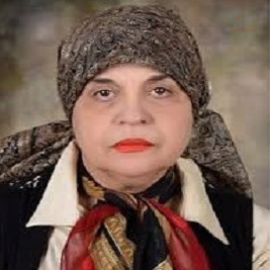
Laila Montaser
ProfessorMenoufia University
Egypt
ABSTRACT
Human coronavirus is highly pathogenic with severe pneumonia. Arising in Wuhan China December 2019, the current COVID-19 epidemic has rapidly grown expanding to become a global health emergency now on pandemic scale. Currently, there are no specific approved drugs for treating COVID-19. This current global health threat by the novel COVID-19 requires an urgent deployment of advanced therapeutic options available and also demands innovative therapies. This way, considering specific targeting, nanotechnology opens a new avenue for antiviral therapy. Although it is well-established that nanotech-based drug-delivery systems improve existing therapeutics in medicine, there are not enough other nanotechnology approaches being explored to tackle the current outbreak. Nanoparticles can promote specific drug targeting (passive or active targeting) and controlled drug-release rate, thereby, affecting the efficacy and safety of the treatment. There is need to treat the significant number of patients who develop pneumonia. Here I consider new approaches to improve patient's biological resistance to COVID-19 using stem cell with application of nanotechnology. The investigation of stem cell based on nanotechnology could provide new methods for stem cell therapy and tissue engineering. The remarkable new data using MSC demonstrate successful harnessing of natural endogenous pathways with powerful protective properties. Nanotechnology tools can play a pivotal role in advancing COVID-19 treatment. As one of the game-changers of the past decade, nanotechnology holds great promise in offering innovative solutions to a wide range of problems regarding the treatment of COVID-19. Meanwhile, among various fields of science and technology, nanotechnology has great potential to be of enormous help in the treatment of COVID-19. Finally, whereas medications and vaccines are beneath evolution, stem cell and nanotechnology may present an off-the-shelf cell curative choice for containing coronaviruses. I am hopeful my viewpoint has implications for the development of a novel drug for the treatment of COVID-19.



